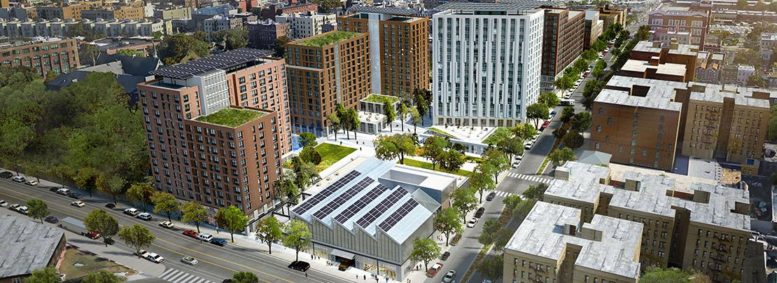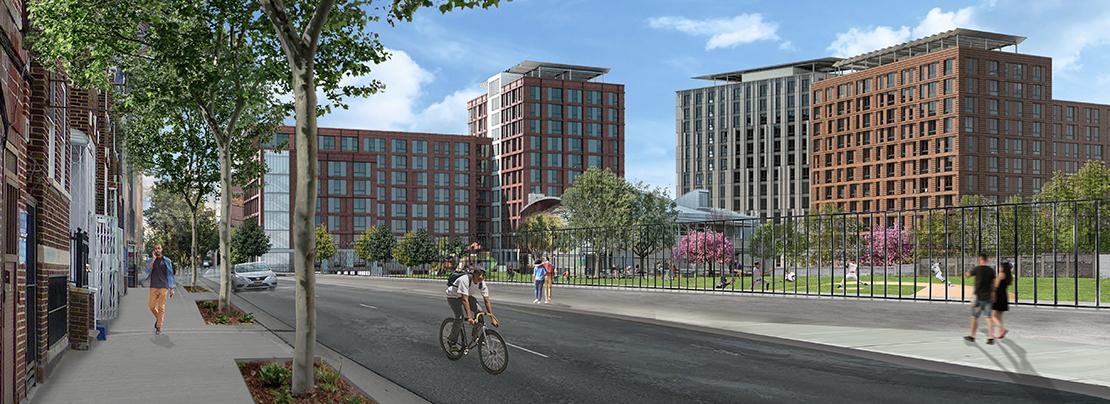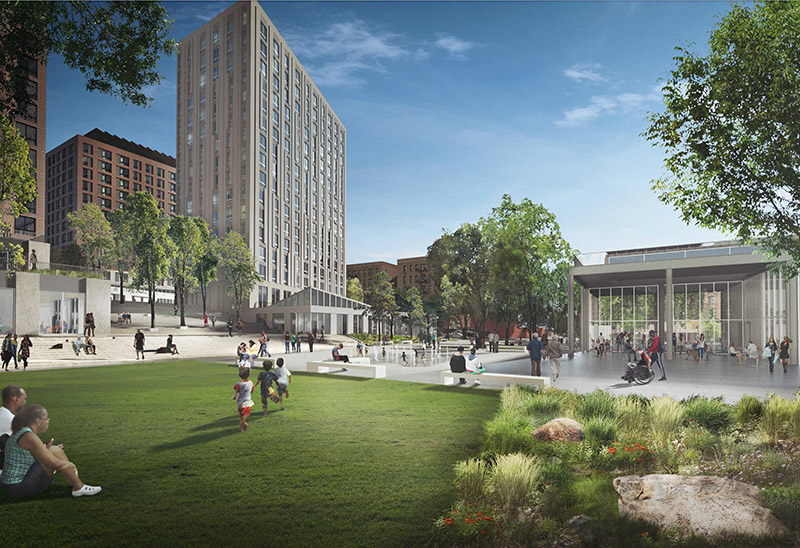Planning work describes potential housing, economic and infrastructure opportunities to support now-funded stations coming to Hunts Point, Parkchester/Van Nest, Morris Park and Co-op City
Department of City Planning (DCP) Director Anita Laremont today announced the release of community-informed planning work that is based on a year of public input on the future of four East Bronx neighborhoods set to receive new Metro-North stations.
“We couldn’t be happier to share our recommendations for these four communities, soon to be home to brand new Metro-North stations. This once-in-a-lifetime opportunity to vastly improve transit access in the East Bronx, and the region as a whole, is also a chance to improve the lives of the residents and businesses that call these neighborhoods home. We look forward to delving deeper into these proposals with local stakeholders and working towards a more accessible and more vibrant East Bronx together,” said DCP Director Anita Laremont.
“We are proud to continue to work with the East Bronx community and DCP to bring transit access and create jobs for Bronx residents,” said NYC Economic Development Corporation (NYCEDC) President and CEO Rachel Loeb. “By offering a thoughtful and inclusive community engagement tool, New Yorkers will be able to share their input about what matters most to them for projects across the city.”
Because the stations, coming to Hunts Point, Parkchester/Van Nest, Morris Park and Co-op City, are now fully funded, community input and planning for the surrounding neighborhoods are more important than ever. DCP’s updated website seeks to encourage continued community input and refinement of the planning process aimed at ensuring the stations serve the local communities.
The new stations are set to begin construction next year and open in 2026, after completion of the Penn Station Access project, which will provide Metro-North riders with a direct route into Manhattan’s Penn Station, reducing commute times by up to two-thirds to and from the East Bronx.
Community planning for the areas around the four stations seeks to guide and support investment in affordable housing, jobs, parks, and schools, among other necessary amenities and services. This planning is guided by the City’s equity and COVID-19 recovery goals.
Included in the vision documents are community recommendations for a new plaza at the Morris Park station; improvements to make walking under the Bruckner Expressway at Hunts Point more inviting; safety and lighting improvements to and from the station along Erskine Ave at Co-op City; and making E Tremont Ave at the Parkchester/Van Nest station a more active street that brings neighborhoods together.
These recommendations grew out of extensive public engagement that started in 2018, with hundreds of residents, business owners, workers, and local institutions taking part. DCP has worked alongside the MTA, Bronx Borough President Ruben Diaz Jr., the NYC Department of Transportation, NYCEDC, Community Boards 2, 9, and 11, and others to advance discussions on the new stations via in-person and remote workshops, meetings, open houses and additional events with community members and City agencies concerning the transit-accessible project.
This latest webpage update ensures transparency and ample opportunities for further discussion in these ongoing planning processes. While the MTA is set to begin construction on the stations in 2022, the Bronx Metro-North Study team will be working to update recommendations based on all the feedback heard in 2021, to be followed by additional public outreach in the spring. This will be an important step as we seek to ensure our Bronx neighborhoods are ready for the new service.
“We are thrilled that the Bronx is getting four new Metro-North stations, providing expanded access to safe and reliable public transit options,” said Lisa Sorin, President of The New Bronx Chamber of Commerce. “We encourage all those who live, work and own businesses in and around Hunts Point, Parkchester/Van Nest, Morris Park, & Co-Op City to visit nyc.gov/planning, participate and stay involved in the planning process to ensure ample community representation.”
“Montefiore and Einstein look forward to continued collaboration with DCP and the Morris Park community in the planning process for this transformative project. The community engagement process will ensure best outcomes for future generations to receive world class health care and education. These recommendations around the new stations will ensure community needs are addressed and rules are established to attract economic opportunities for the East Bronx and beyond,” said Rick Chandler, Senior Vice President, Strategic Development, Montefiore Health System.
“The Morris Park community and commercial corridor are excited for this new step forward towards having direct Metro North connection to Manhattan, but also to Westchester and Connecticut. We encourage residents and businesses alike to continue reviewing the updated DCP project website, and use it as the avenue for conveying the community’s own vision for the comprehensive infrastructure improvements, that this project has a unique and unparalleled opportunity to create,” said Dr. Camelia Tepelus, Executive Director of the Morris Park Business Improvement District.
In addition, DCP supports the City Planning Commission in its annual review of approximately 450 land use applications for a variety of discretionary approvals. The Department also assists both government agencies and the public by advising on strategic and capital planning and providing policy analysis, technical assistance and data relating to housing, transportation, communit















